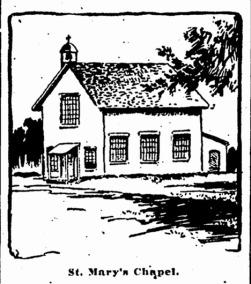 Richard Queen is my 3rd Great Grandfather.
Richard Queen is my 3rd Great Grandfather.
b. 1725 (Charles County MD) – d. October 7, 1794 (Queen Plantation, Prince Georges County MD)
RICHARD QUEEN deeded the Queens Chapel Mission Church to John Carroll, Archbishop of Baltimore, when he died in 1794 (see will below).
The church was officially called “St. Mary’s Chapel”, but everyone knew it as “Queens Chapel”.

Richard Queen was born in 1725 in Charles County, Maryland, to Mary Jameson, age 28, and Marsham Queen, age 29. As early censuses report, he lived in Prince George County, Maryland.
Richard Queen married Mary Gardiner in 1747. He was 22 years old and she was 21. Their children were James (b. 1750), who left for Kentucky in 1785, Mary, Joseph, Marsham, Ellender, Elizabeth and Samuel.
Prince George County MD borders the Eastern portion of Washington D.C. In 1791 portions of this county were ceded to form the new District of Columbia.
The home where Richard Queen lived is now part of Washington D.C., as per this article by Robert Malesky:
“When I moved to DC decades ago and first drove out Michigan Avenue I noticed it suddenly became Queen’s Chapel Road as it crossed the Maryland border. What queen? I wondered. What chapel? And then I kept running across little pieces of Queen’s Chapel Road in nearby DC. Just a block or two here and there. It got me curious so I looked into it.
“What we now know as 18th Street, the original eastern boundary of Brookland, was once part of Queen’s Chapel Road, which ran from the Hyattsville area all the way to Bladensburg Road. It was the route to the Catholic chapel on the colonial estate of the Queen family. Queen’s Chapel stood near the intersection of present-day 20th and Evarts Streets, NE in Langdon, and it has quite a history.
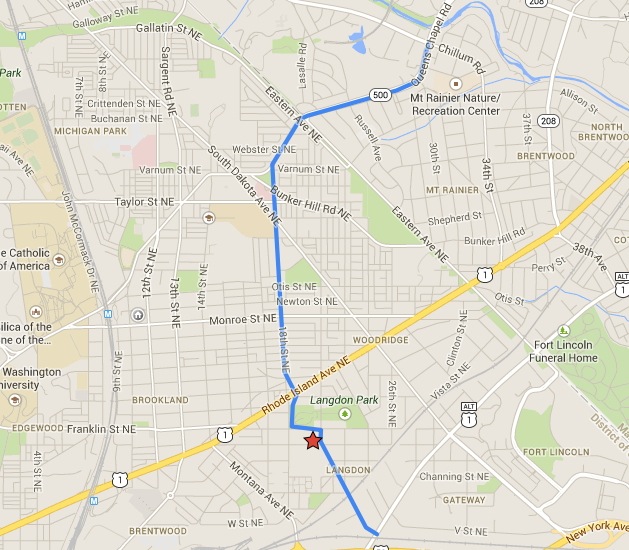
“Marsham Queen was part of the wealthy Queen family, who first came to Maryland in the late 17th century. Through marriage, the Queens came into a huge tract of land in the early 1700s that stretched from Bladensburg to this area and beyond, and their name and influence is all over the region. Though Queen family tradition says that in 1721 Richard Queen built a mansion in what is now the Langdon area, Richard wasn’t born until 1725, so it was most likely his father, Marsham Queen, who built their home. The Queens were slaveholders, as were most of the colonial landowners in the area, and the slaves were probably the actual builders of the mansion, one wing of which was reserved as a Catholic chapel.
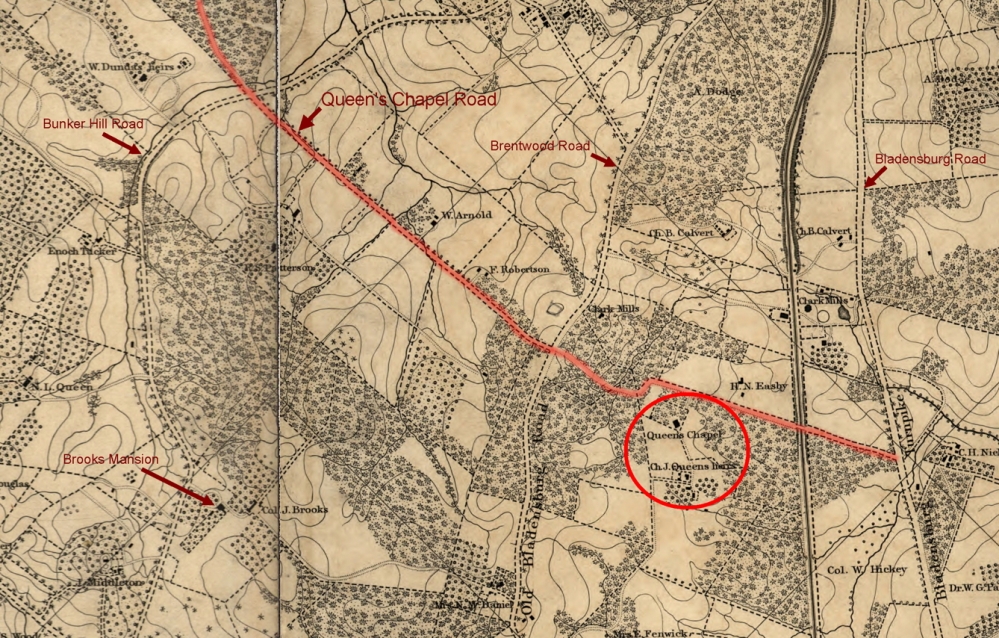
“Though Maryland had been founded by Catholics and was open to all religions, by the early 18th century Catholics were a persecuted minority, unable to practice law or to teach, and with severely restricted voting rights. Mass could only be held in private houses, which is why Marsham Queen put the chapel within his home. Family tradition says he soon built an outdoor chapel but disguised it as a smokehouse. Catholic families from around the area, along with their slaves, would come here to worship. Services were held at best monthly, with priests coming from Bohemia and St. Mary’s City. It seems to have been officially called St. Mary’s chapel, but Queen’s Chapel is the name that stuck. (Illustration from Evening Star, March 23, 1901)
“Other than oral tradition, the first real evidence of Queen’s chapel is Richard Queen’s will from 1793, in which he bequeaths two acres of land “where the Roman Catholic chapel now stands.” to Bishop John Carroll, the bishop of Baltimore. A copy of that hand-written will is at the Catholic University archives.
“Queen’s Chapel was burned during the Revolutionary War era, seemingly by accident, and rebuilt. Then in 1814, after the battle of Bladensburg, the chapel burned for a second time when the British torched it as they marched downtown to burn the Capitol and White House. Once more it was rebuilt. Finally during the Civil War, some Union soldiers camped nearby heard stories that the Queens were Confederate sympathizers (many were, though some were in the Union Army) and had once owned slaves. They set the chapel alight and prevented neighbors from putting out the blaze until it had burned to the ground for a third and final time.
“The ruins stayed that way, unused and forgotten, until 1908, when a new church was built on the site and christened St. Francis de Sales. In the 1920s, St. Francis de Sales moved to its present location at 20th Street & Rhode Island Avenue NE, and the church they had built just twenty years earlier on the foundations of the original Queen’s Chapel was torn down. The site of Queen’s Chapel was absorbed into Evarts Street and Langdon Elementary School.
“Queen’s Chapel was one of the first Catholic places of worship in Maryland”
In a 1790 Cencus, this is how Richard Queen’s household is recorded:
| Name: | Richard Queen |
|---|---|
| Home in 1790 (City, County, State): | Prince Georges, Maryland |
| Free White Persons – Males – 16 and over: | 1 |
| Free White Persons – Females: | 4 |
| Number of Slaves : | 21 |
| Number of Household Members: | 26 |
Richard Queen died on October 7, 1794. He was 72 years old. His wife, Mary Gardiner Queen, died in 1776 at the age of 51.
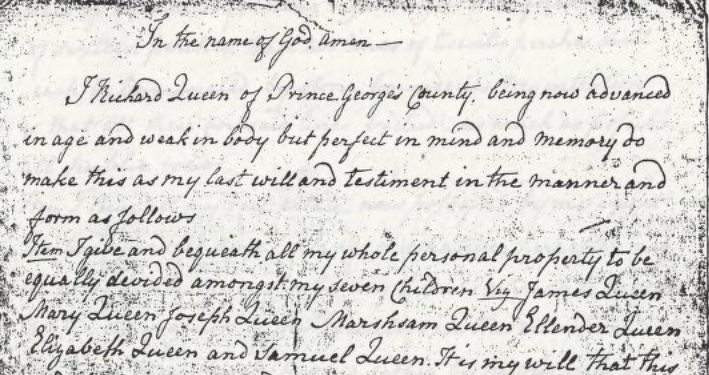
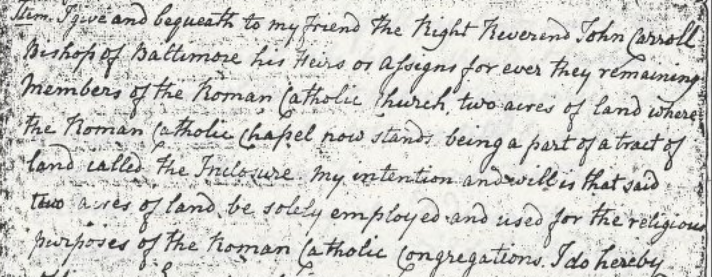
One Comment Add yours